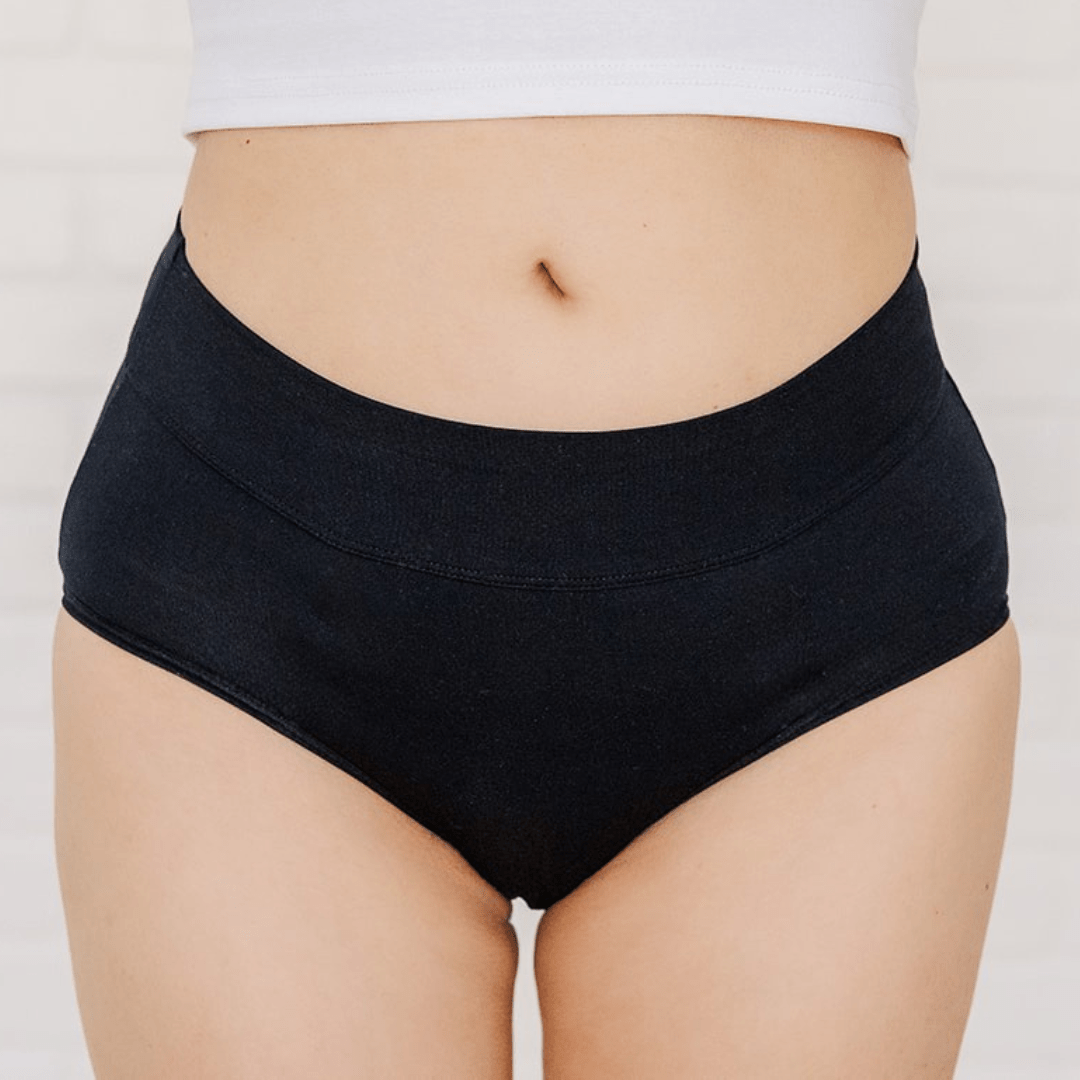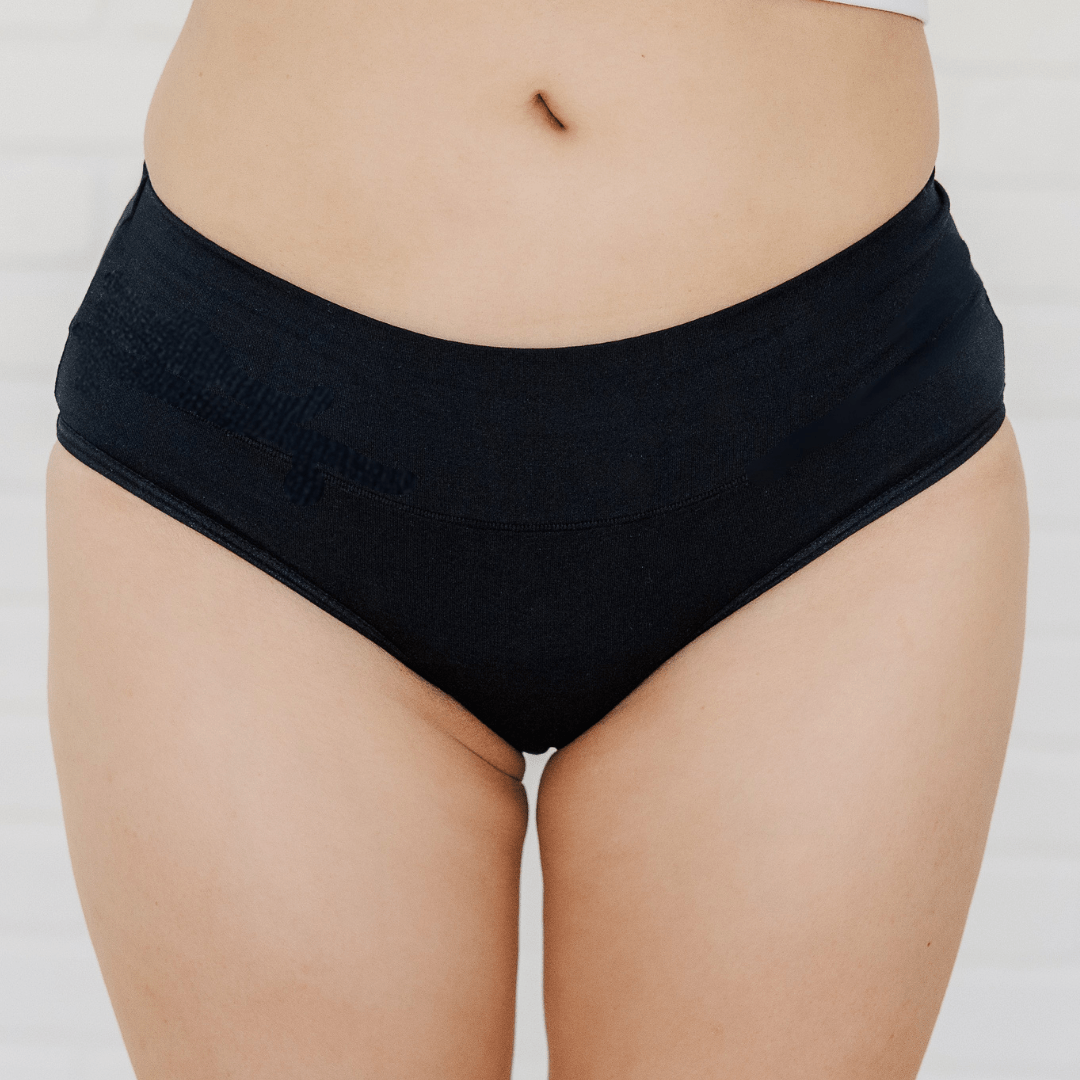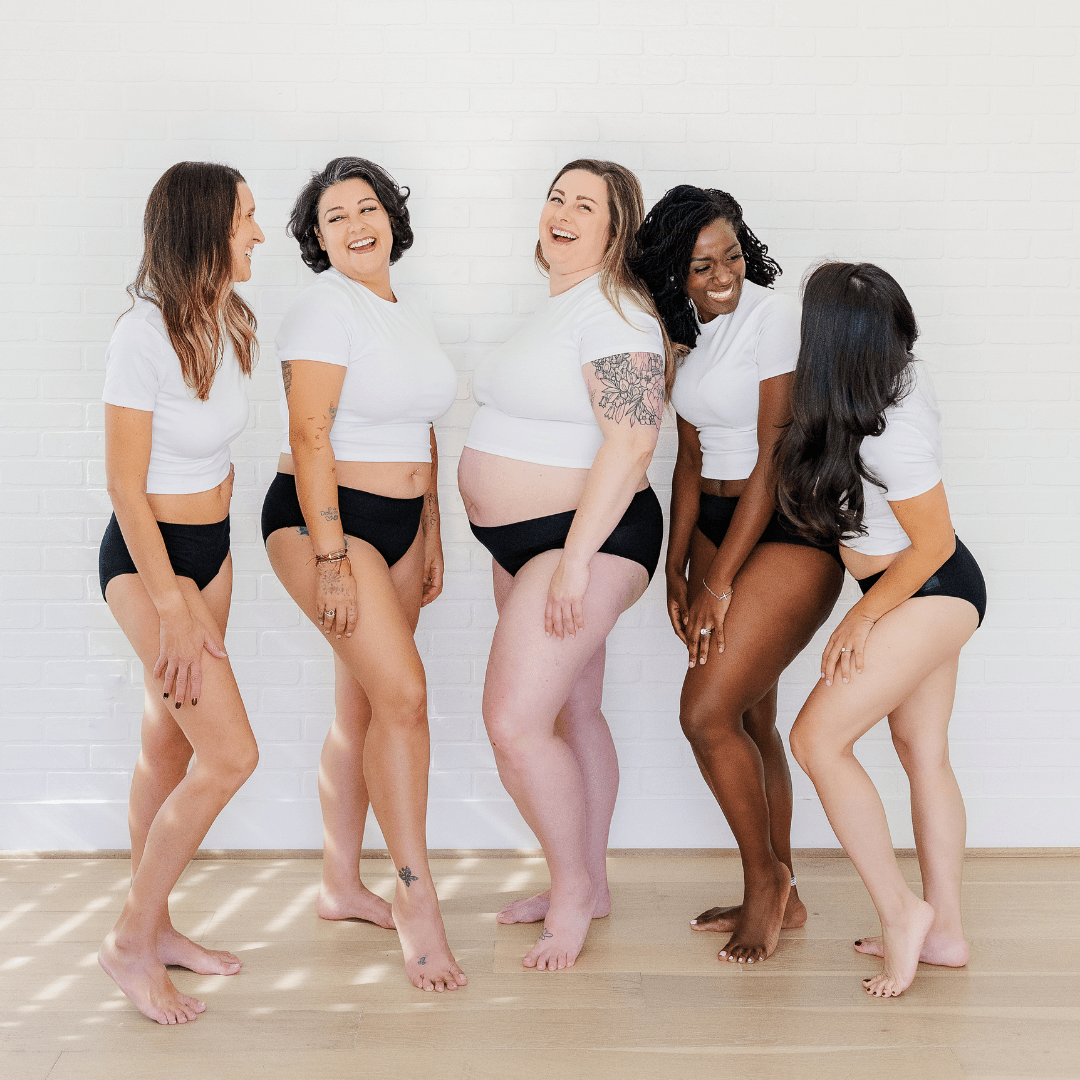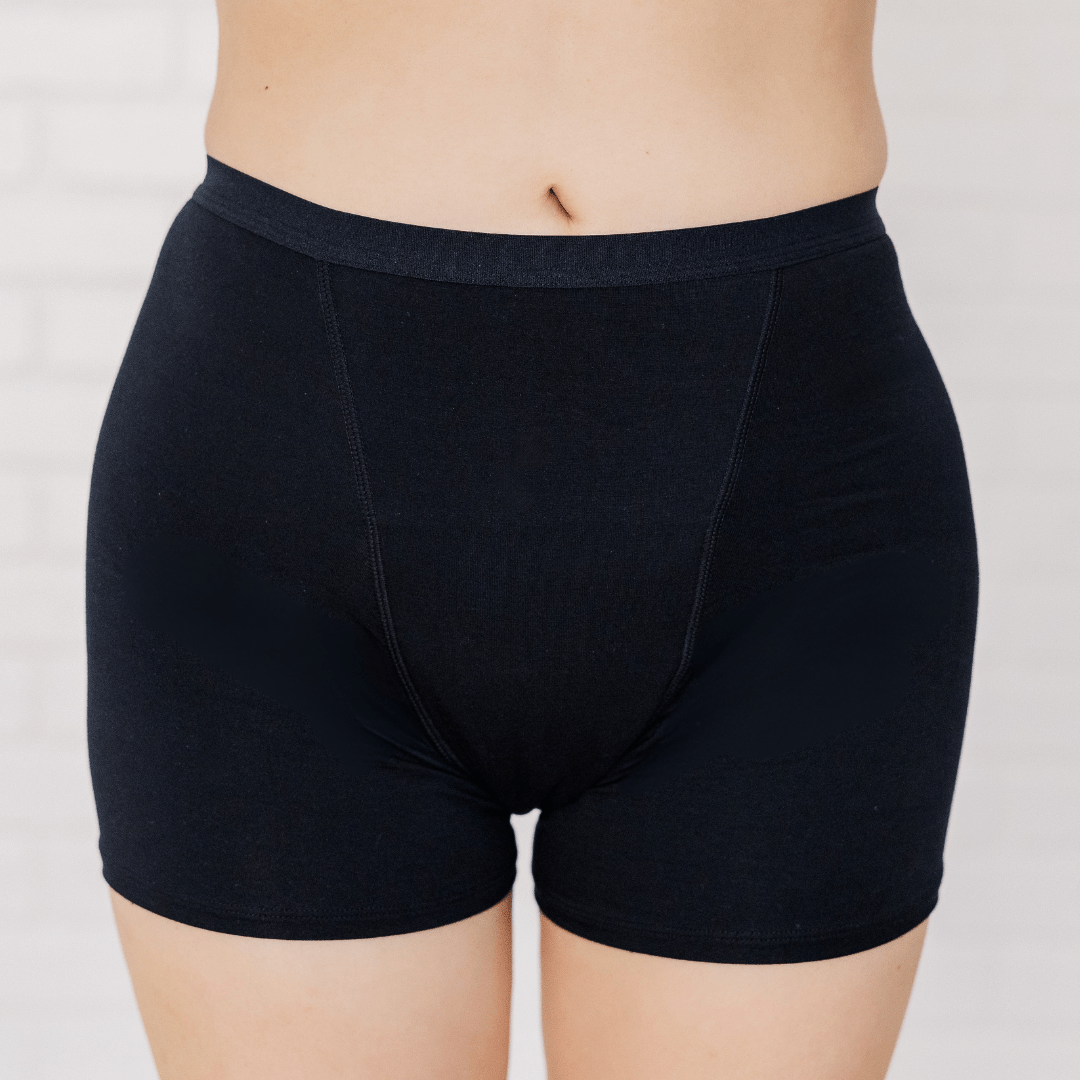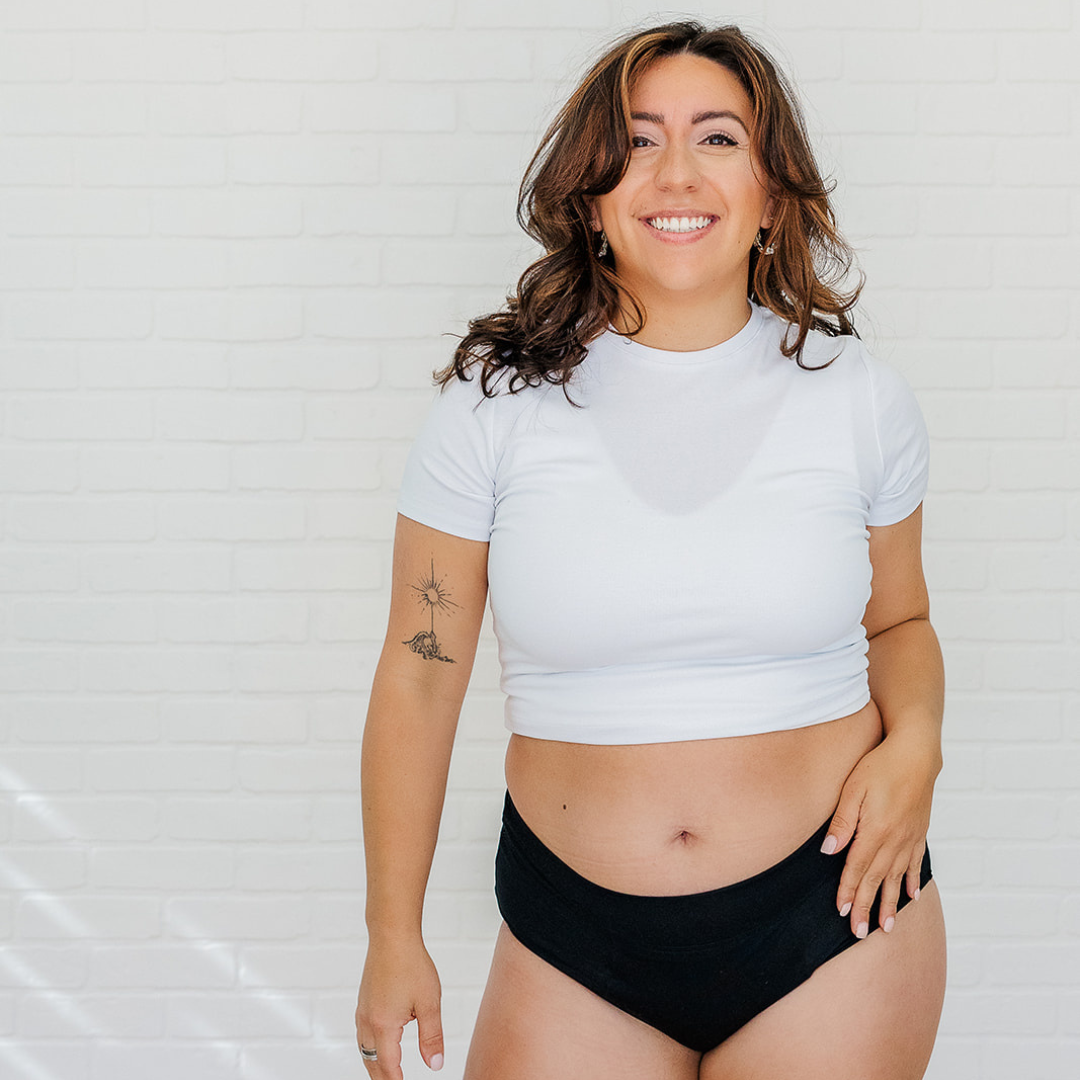Spotting Between Periods: Why It Happens and What to Do About It
Periods are confusing enough without your body throwing in a curveball like mid-cycle spotting. One week you're flowing as expected, the next... surprise! A little blood when you're not due.
If you’ve ever found yourself Googling "spotting between periods" or wondering if you need to panic — take a breath. It’s more common than you think, and in most cases, it's not a red flag.
In this guide, we’ll break down what spotting is, why it happens, what might be causing it, and how you can handle it — with a little help from your trusty menstrual brief.
What Is Spotting, Exactly?
Spotting refers to light bleeding that shows up outside of your normal period. It’s usually not enough to fill a pad or tampon, and it can look like:
- Pink or brown discharge
- A few dots or smudges in your underwear
- Light bleeding that lasts less than a day
Spotting can happen at any time during your cycle and may come with or without other symptoms.
Common Causes of Spotting Between Periods
There’s no one-size-fits-all answer here. Spotting can be linked to hormones, health conditions, or even your birth control. Here are some of the most common reasons:
1. Ovulation
Around the middle of your cycle, your body releases an egg. This can cause a temporary dip in estrogen levels, triggering light spotting for some people. It’s usually harmless.
2. Hormonal Birth Control
Starting, stopping, or switching birth control (pill, patch, IUD, etc.) can cause breakthrough bleeding. It’s especially common in the first 3 months as your body adjusts.
3. Implantation Bleeding
If you’re trying to conceive (or not), spotting might be implantation bleeding — when a fertilised egg attaches to your uterine lining. It usually happens 6–12 days after ovulation.
4. Perimenopause or Puberty
Hormonal chaos is real in both early and late reproductive years. Teens and people approaching menopause might experience irregular bleeding or spotting between cycles.
5. Polycystic Ovary Syndrome (PCOS)
PCOS can cause irregular cycles and unexpected bleeding due to hormone imbalance. If spotting happens often and you also have acne or excess hair, chat with your GP.
6. Infections or Irritation
Sexually transmitted infections (STIs), yeast infections, or even friction from sex can irritate the cervix or vaginal canal and lead to spotting.
7. Fibroids or Polyps
These are usually non-cancerous growths in the uterus that can cause irregular bleeding. They’re common and can be diagnosed with an ultrasound.
8. Pregnancy Complications
If you’re pregnant and experiencing spotting — especially with pain or cramping — seek medical advice ASAP. It can be a sign of miscarriage or ectopic pregnancy.
When to See a Doctor About Spotting
Spotting once in a while? Totally normal. But if it becomes frequent, heavy, or painful, it’s time to get it checked out.
Call your doctor if:
- You bleed between periods for more than a few months in a row
- You’re postmenopausal and spotting
- You have pelvic pain, fever, or unusual discharge
- You’re pregnant and bleeding
Remember: Your period isn’t supposed to be a mystery novel. If something feels off, listen to your gut.
How a Menstrual Brief Can Help
If you're spotting and don’t want to commit to a full pad or liner, Fri Period menstrual briefs are the ultimate low-effort solution.
Here at Fri Period, our menstrual underwear is designed for more than just period days. The breathable, ultra-absorbent gusset handles spotting, sweat, discharge — even light bladder leaks — while keeping you comfy and dry.
Why menstrual briefs are perfect for spotting:
- No need to “guess” if it’s coming
- Soft, non-irritating organic cotton fabric for sensitive days
- Washable and reusable — no more tossing panty liners
- Leak-proof protection without the bulk
- Easy to machine wash and care for
- Perfect for travel, workouts, and unexpected leaks
We’ve also designed styles like bikini briefs, boxer briefs, and high waist period underwear for all kinds of flows — from spotting to heavy flow days.
How to Track and Manage Spotting
Knowledge is power, and that includes knowing your own cycle inside and out.
Here’s how to stay on top of things:
- Use a period tracker app to log spotting and patterns
- Note your symptoms — bloating, mood swings, cravings, etc.
- Write down when spotting happens: is it mid-cycle? After sex? Post-gym?
- Bring this info to your GP for a clearer picture
Being in tune with your body doesn’t make you paranoid — it makes you empowered.
Final Thoughts: It’s Your Body, Not a Mystery
Spotting between periods might feel weird or frustrating, but it’s not something to panic over. Most of the time, it’s just your body doing its thing — especially if you’re dealing with hormones, stress, or life changes.
With the right knowledge, support, and a trusty menstrual brief in your drawer, you can handle the unexpected with confidence.
FAQs
1. Is spotting between periods normal?
Yes — occasional spotting is common, especially due to ovulation, birth control, or hormonal shifts.
2. How long does spotting usually last?
Typically less than a day or two. If it lasts longer or becomes frequent, see your GP.
3. Can I use menstrual briefs for spotting?
Absolutely. They’re comfy, discreet, and reusable — perfect for unexpected light bleeding.
4. Should I be worried if I spot every month?
Not necessarily, but track it. If it becomes regular or comes with other symptoms, check with a doctor.
5. Can stress cause spotting?
Yes, high stress levels can affect hormone production and may lead to irregular spotting.
